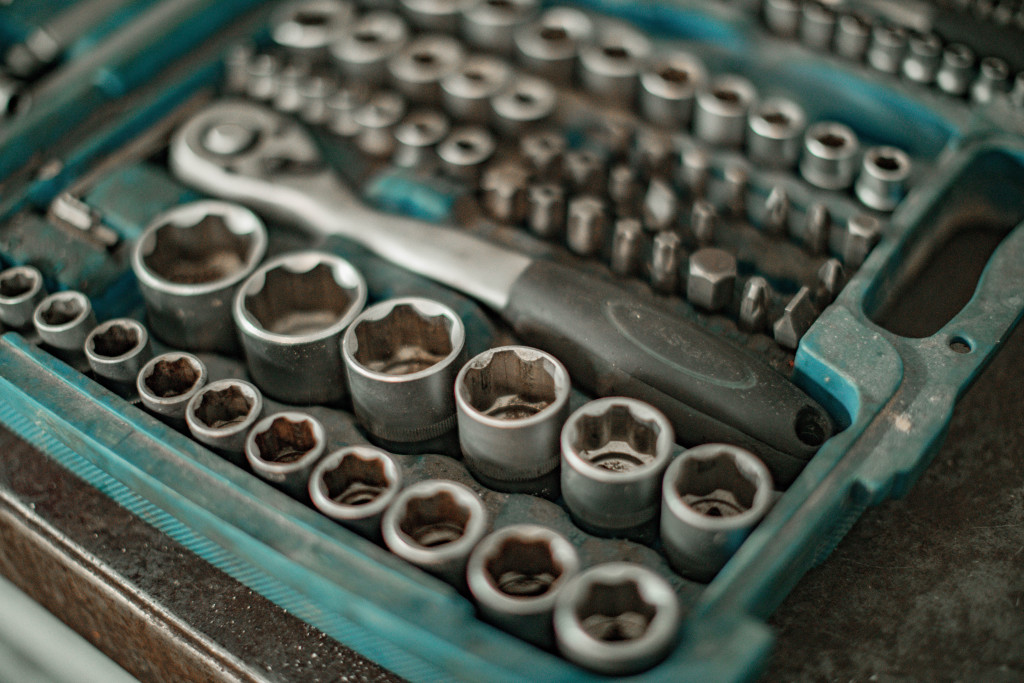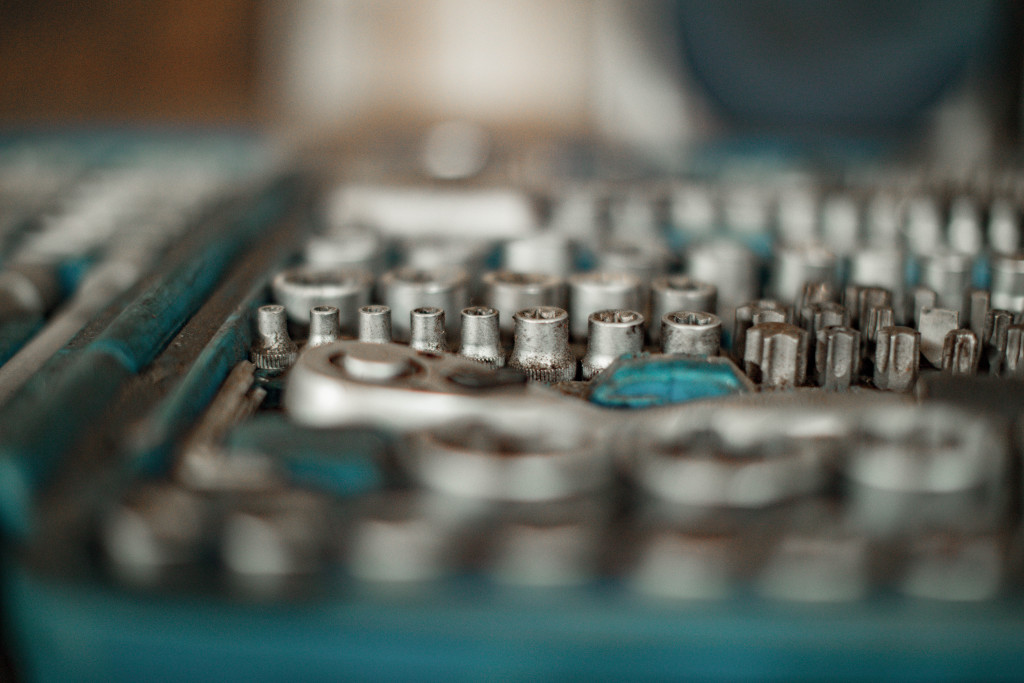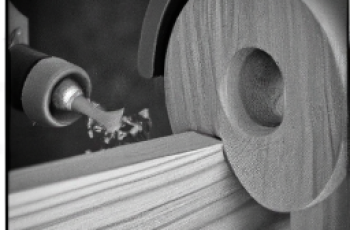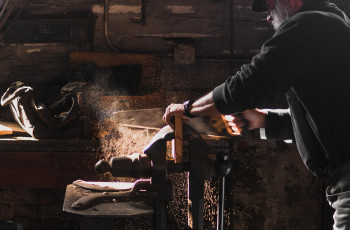Would you believe that a small power tool called a die grinder could be a game-changer for your woodworking projects? With its high-speed rotation and versatile range of accessories, die grinders have become a valuable tool for woodworkers looking to add intricate details, shape, and smooth out their creations. In this article, we will explore the benefits and techniques of using die grinders for woodwork and how they can take your craftsmanship to the next level. So, grab your trusty die grinder and let’s embark on a woodworking adventure together!
What is a Die Grinder?
A die grinder is a power tool that is typically hand-held and used in various industries, including woodwork. It is a versatile tool that is used for shaping, contouring, smoothing, polishing, carving, routing, and mortising wood surfaces. The die grinder gets its name from the fact that it often uses different attachments or “dies” to achieve different tasks. These attachments can include cutting discs, sanding discs, routing bits, carving burrs, and wire brushes. Die grinders can be powered by electricity, compressed air, or batteries, and they offer a level of precision control and efficiency that is essential in woodwork projects.
Advantages of Using Die Grinders for Woodwork
Precision Control
One of the biggest advantages of using a die grinder for woodwork is the precision control it offers. The compact size and ergonomic design of the tool allow for easy maneuvering, making it easy to achieve intricate details and fine finishes. Whether you are shaping, carving, or engraving, the die grinder allows you to make precise cuts and smooth contours with ease.
Versatility
Another significant advantage of die grinders for woodwork is their versatility. With the ability to change attachments easily, a single die grinder can perform a wide range of tasks. From cutting and sanding to routing and polishing, the die grinder can adapt to different woodworking needs. This versatility not only saves time and money but also reduces the need for multiple tools cluttering your workspace.
Efficiency
When it comes to woodwork, efficiency is key. Die grinders offer high-speed rotation, which allows for quick material removal and smoother finishes. The powerful motor and adjustable RPM (rotations per minute) of a die grinder give you the control to work efficiently and effectively. Whether you need to remove excess material, shape a piece, or achieve a polished surface, the die grinder can get the job done efficiently.
Accessibility
Die grinders are designed to be accessible tools, meaning they can be used by anyone, regardless of their skill level or physical abilities. The lightweight and compact design make it easy to handle, reducing fatigue over long periods of use. The simple setup and operation allow beginners to quickly grasp the basics, while professionals can take advantage of the tool’s advanced features. Die grinders truly provide accessibility to everyone interested in pursuing woodwork projects.

Safety Considerations
While die grinders are incredibly versatile and efficient tools, it is essential to prioritize safety when using them for woodwork projects. Here are some important safety considerations to keep in mind:
Personal Protective Equipment
Always wear the appropriate personal protective equipment (PPE) when operating a die grinder. This includes safety glasses or goggles to protect your eyes from flying debris, a dust mask or respirator to prevent inhaling harmful dust particles, and hearing protection to reduce noise exposure. Additionally, wearing gloves can provide extra grip and protect your hands from potential injuries.
Maintaining a Safe Work Environment
Create a safe work environment by ensuring that your workspace is well-lit, clean, and organized. Remove any potential hazards such as loose cords, clutter, or tripping hazards. Keep bystanders at a safe distance, and make sure you have a clear path to maneuver around your work area.
Proper Handling and Technique
It is crucial to handle the die grinder correctly and use proper technique to avoid accidents or injuries. Keep a firm grip on the tool, using both hands if necessary, and always maintain control of the tool’s movement. Avoid applying excessive force or pressure, as this can cause the tool to bind or kickback. Familiarize yourself with the tool’s specific instructions and recommended uses to ensure safe operation.
Choosing the Right Die Grinder for Woodwork
Choosing the right die grinder for your woodwork projects can significantly impact the quality of your results. Here are some factors to consider when selecting a die grinder:
Power Source
Die grinders can be powered by electricity, compressed air, or batteries. Consider the power source that best suits your needs and working environment. Electric die grinders are typically more powerful but require a nearby power outlet. Compressed air die grinders offer high RPM and are lightweight, making them suitable for prolonged use. Battery-powered die grinders provide convenience and portability but may have limited power and runtime.
Speed RPM
The speed at which a die grinder operates is measured in rotations per minute (RPM). Different woodwork tasks may require varying RPM to achieve optimal results. Lower RPM is generally suitable for polishing and finishing, while higher RPM is more effective for material removal. Look for a die grinder with a variable speed setting that allows you to adjust the RPM according to the task at hand.
Size and Weight
Consider the size and weight of the die grinder, as this can affect handling and comfort. A lightweight and compact die grinder will be easier to maneuver and reduce fatigue during extended use. However, if you require more power or plan to work on larger projects, a slightly heavier and larger die grinder may be more suitable. Choose a size and weight that best suits your preferences and project requirements.

Different Attachments for Die Grinders in Woodworking
Die grinders are versatile tools that can be used for various woodworking tasks by simply changing the attachments or “dies.” Here are some common attachments used with die grinders in woodworking:
Cutting Discs
Cutting discs are thin, circular attachments with a cutting edge used to remove excess material, shape wood, or cut through it. They come in different sizes and thicknesses, allowing for precise and controlled cutting. Cutting discs can be used to make straight cuts, curves, and intricate patterns in woodwork projects.
Sanding Discs and Bands
Sanding discs or bands are attachments used for smoothing and refining wood surfaces. They come in various grit sizes, allowing you to choose the level of coarseness or fineness needed for your project. Sanding discs and bands are perfect for removing rough edges, shaping curves, and preparing the wood for finishing.
Routing Bits
Routing bits are attachments used for creating intricate designs, edges, and decorative elements in woodwork. They come in various shapes and sizes, allowing for detailed carving, beveling, and chamfering. Routing bits are commonly used for creating decorative moldings, joinery work, and creating precise cutouts.
Carving Burrs
Carving burrs are attachments used for shaping, carving, and sculpting wood. They feature various shapes and cutting surfaces, allowing for detailed and intricate carving work. Carving burrs are perfect for creating unique patterns, designs, or textures on wood surfaces, adding a personalized touch to your woodwork projects.
Wire Brushes
Wire brushes are attachments used for cleaning, rust removal, or texturing wood surfaces. They consist of wire bristles that effectively remove dirt, paint, or rust from wood. Wire brushes can also be used to create a textured or distressed effect on the surface of the wood, adding depth and character to your projects.
Preparation and Safety Precautions
Before you start using a die grinder for woodwork, it is important to take some preparation and safety precautions. Here are a few steps to consider:
Selecting the Appropriate Wood
When working with a die grinder, it is crucial to choose the appropriate type of wood for your project. Different types of wood have different characteristics, such as hardness and grain patterns, which can affect the performance of the die grinder and the quality of the finished result. Research and select the wood species that best suits your project needs and the capabilities of your die grinder.
Securing the Workpiece
To ensure safe and accurate operation, it is important to secure the workpiece firmly before using a die grinder. This can be done using clamps, vises, or jigs, depending on the size and shape of the workpiece. A secure workpiece prevents any movement or shifting during the grinding process, reducing the risk of accidents and ensuring precise results.
Clearing the Workspace
Clearing the workspace of any unnecessary clutter or debris is essential for safety and efficiency. Remove any loose objects, tools, or materials that may obstruct your movement or distract your focus. A clean and organized workspace allows you to work smoothly and minimizes the risk of accidents or damage to the workpiece.
Using Clamps and Jigs
Clamps and jigs can be incredibly useful when working with a die grinder. They help secure the workpiece firmly, provide stability, and allow for more controlled and precise grinding. Use clamps or jigs to hold the workpiece in place, especially when working on smaller or more intricate woodwork projects. This provides added safety, precision, and peace of mind while using the die grinder.

Basic Techniques for Die Grinding in Woodwork
There are several basic techniques you can use when die grinding in woodwork. These techniques allow you to achieve specific results and enhance the overall quality of your projects. Here are some basic techniques to consider:
Shaping and Contouring
Die grinders are fantastic tools for shaping and contouring wood surfaces. By using cutting discs or routing bits, you can remove excess material, create curves, and shape the wood according to your desired design. Start by marking the areas you want to shape or contour, and slowly work the die grinder along the marked lines, remembering to maintain steady control and applying even pressure.
Smoothing and Polishing
Once you have shaped the wood, you can use sanding discs or bands to smooth and polish the surface. Start with a coarse grit sanding disc to remove any rough edges or imperfections, gradually working your way up to finer grits for a smoother and more refined finish. Move the die grinder in even, back-and-forth or circular motions to ensure uniform sanding and polishing.
Engraving and Carving
Die grinders are also great for engraving and carving wood surfaces. Utilizing carving burrs with different shapes and cutting edges, you can create intricate designs, patterns, or even personalized engravings. Plan your design beforehand, marking the areas you wish to engrave. Slowly and steadily guide the die grinder along the marked lines, maintaining control and adjusting the pressure as needed to achieve the desired depth.
Routing and Mortising
Routing and mortising refer to techniques used to create grooves, channels, or holes in wood. By using specific routing bits, die grinders allow you to achieve clean and precise results. Secure the workpiece and plan the routing or mortising path. Move the die grinder steadily and smoothly along the marked lines, ensuring even cuts and maintaining control at all times. Take your time and make several shallow passes if necessary to achieve the desired depth and finish.
Finishing and Maintenance
Once you have completed the die grinding process, it is important to finish and maintain the woodwork properly. Here are some essential steps to consider:
Sanding and Staining
After die grinding, sand the wood surface with fine-grit sandpaper to remove any visible marks or scratches left by the die grinder. This will also help prepare the wood for staining or painting. Apply the appropriate stain or finish of your choice, following the manufacturer’s instructions. Allow the stain or finish to completely dry before applying any further protection or maintenance.
Sealing and Protecting
To protect the wood surface and enhance its longevity, consider applying a suitable sealing or protective coat. This can be done using a clear varnish, lacquer, or wax, depending on the desired finish and the type of wood you are working with. Apply the sealant in even, thin coats, allowing each coat to dry before moving on to the next. This will help protect the wood from moisture, UV damage, and general wear and tear.
Cleaning and Lubricating
Proper cleaning and lubrication of your die grinder are essential for its longevity and optimal performance. Disconnect the tool from its power source and use a brush or cloth to remove any wood dust, debris, or residue from the attachments and the tool itself. Lubricate the moving parts and mechanisms according to the manufacturer’s instructions, using the recommended lubricant or oil. This will ensure smooth operation and prevent any potential damage or malfunction.
Common Issues and Troubleshooting
While die grinders are reliable tools, encountering certain issues is not entirely uncommon. Here are some common problems you may face and possible troubleshooting steps:
Burn Marks and Scorching
If you notice burn marks or scorching on the wood surface during die grinding, it is likely due to excessive heat generated by the friction between the tool and the wood. To troubleshoot this issue, reduce the pressure and speed at which you are grinding. Allow the tool to cool down between grinding passes, if necessary. You can also try using a coarser grit sanding disc to remove any scorched areas and then proceed with finer grits for a smooth finish.
Inconsistent Cutting or Sanding
If you experience inconsistent cutting or sanding results, it may be due to an incorrect attachment or worn out attachment. Ensure that the attachment is securely fitted and aligned with the die grinder. If you have been using the attachment extensively, it may be time to replace it, as worn-out attachments can affect the quality and consistency of the cutting or sanding process.
Attachment Failure
Occasionally, attachments may come loose or fail to stay securely in place while using the die grinder. This can be dangerous and lead to accidents or damage to the workpiece. Ensure that the attachment is properly installed and securely tightened before use. If the attachment continues to come loose, inspect it for any damage or deformities that may hinder its effectiveness. If necessary, replace the attachment with a new one from a reputable manufacturer.
Overheating
Overheating is another common issue that can affect die grinders, especially during prolonged use or when pushing the tool beyond its capabilities. If you notice the tool becoming excessively hot, pause your work and allow the die grinder to cool down. Avoid applying excessive pressure or forcing the tool to work faster than its recommended capacity. If the issue persists, consider using a die grinder with a higher power rating or opting for shorter working intervals to prevent overheating.
Die Grinder Tips and Tricks
To make the most out of your die grinder in woodwork projects, consider these tips and tricks:
Exploring Different Speeds
Experiment with different speed settings on your die grinder to see how it affects cutting, sanding, and carving results. Lower speeds are generally better for more precise tasks, while higher speeds can be used for faster material removal and shaping. Find the speed that suits your needs and the characteristics of the wood you are working with.
Combining Attachments
Get creative by combining different attachments to achieve unique effects or finishes. For example, you can use a cutting disc to create a rough design and then switch to a sanding disc or band to smooth and refine it. By combining different attachments, you can achieve intricate and multidimensional woodwork designs.
Experimenting with Pressure
Different wood species and projects may require different amounts of pressure when die grinding. Experiment with applying varying amounts of pressure to achieve different effects or remove material at different rates. Be sure to exercise caution and avoid applying excessive force, as it can lead to the tool binding or kickback.
Using Templates and Guides
For more precise and consistent results, consider using templates or guides when die grinding. Templates can be created from sturdy materials such as acrylic or plywood and used as a guide for shaping and carving. Guides can be clamped or attached to the workpiece to help maintain a steady and straight path while routing or engraving. Templates and guides provide additional support, reduce errors, and enhance the overall precision of your work.
In conclusion, die grinders are valuable tools for woodwork projects, offering precision control, versatility, efficiency, and accessibility. By understanding the different types of die grinders, safety considerations, choosing the right die grinder and attachments, and applying proper techniques, you can achieve outstanding results in your woodwork endeavors. Remember to prioritize safety, embrace creativity, and practice regularly to master the art of die grinding in woodwork. Happy woodworking!



